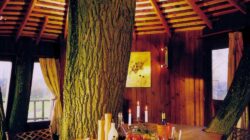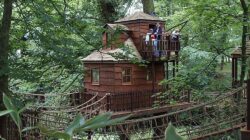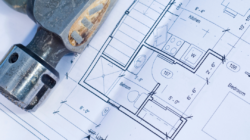What is the best Tree for Building a Tree House?
What is the best Tree for Building a Tree House?
When it comes to constructing a tree house, the choice of tree is paramount. Not only does it need to support the structure, but it also needs to integrate seamlessly with the design, ensuring safety and stability. From our 30+ years of experience in joinery and building tree houses, we have had extensive insight into the importance of selecting the right materials and trees, ensuring not only the longevity and safety of the structure but also its harmony with the natural environment.
1. Oak
Oak trees stand at the pinnacle of strength and durability, making them an excellent choice for tree houses. Their robust branches and deep root systems provide a stable foundation for any construction. Oaks grow slowly, which means their wood is incredibly dense, offering extra support and longevity for tree houses. Additionally, their broad canopy can offer ample shade, making your tree house a cool retreat during warmer months.
2. Maple
Maple trees are another popular choice for tree house enthusiasts. They have strong, sturdy trunks and a dense canopy that can provide plenty of cover. Maples are known for their vigorous growth and can support a considerable amount of weight, making them suitable for larger tree houses. Their widespread branches also allow for a variety of designs, offering flexibility in construction.
3. Beech
Beech trees are renowned for their smooth bark and robust structure, which can support substantial constructions. They have a vast and dense root system that ensures the tree remains stable, even in adverse weather conditions. Beech trees also have a large canopy, which can envelop a tree house in a leafy embrace, providing privacy and a serene environment. However, care must be taken to regularly inspect the tree for signs of disease or weakness.
4. Hemlock
Hemlock trees are an excellent choice for those looking to build in cooler climates. They are highly resilient and can bear the weight of a tree house with ease. Hemlocks have a straight trunk and well-spaced branches, which can simplify the construction process. Their evergreen nature ensures that your tree house will be surrounded by greenery all year round, offering a picturesque setting regardless of the season.
5. Douglas Fir
Douglas Fir trees are known for their towering height and straight trunks, making them ideal for taller tree houses. They have a high strength-to-weight ratio, which is crucial for supporting heavy loads without compromising the tree’s health. Douglas Firs also grow relatively quickly, which can be beneficial if you’re planning to build on a younger tree and wait for it to mature.
Considerations
When selecting a tree for your tree house, it’s essential to consider not just the species, but also the individual tree’s health, age, and location. A healthy, mature tree in a safe, accessible location is ideal. It’s also important to think about the impact of the construction on the tree, aiming to minimise harm and ensure the tree continues to thrive. Feel free to contact us if you’re considering a tree house for your home, we would be more than happy to assist and provide valuable insights into the suitability of your chosen tree and how best to proceed with your project! Finding a way to design and construct your dream tree house in a way that is safe for both the occupants and the tree itself!



